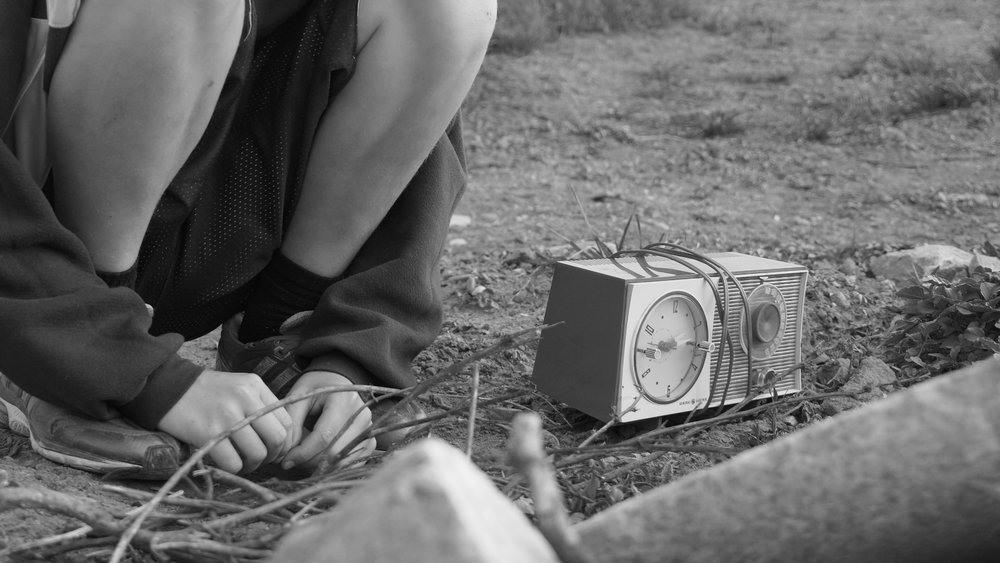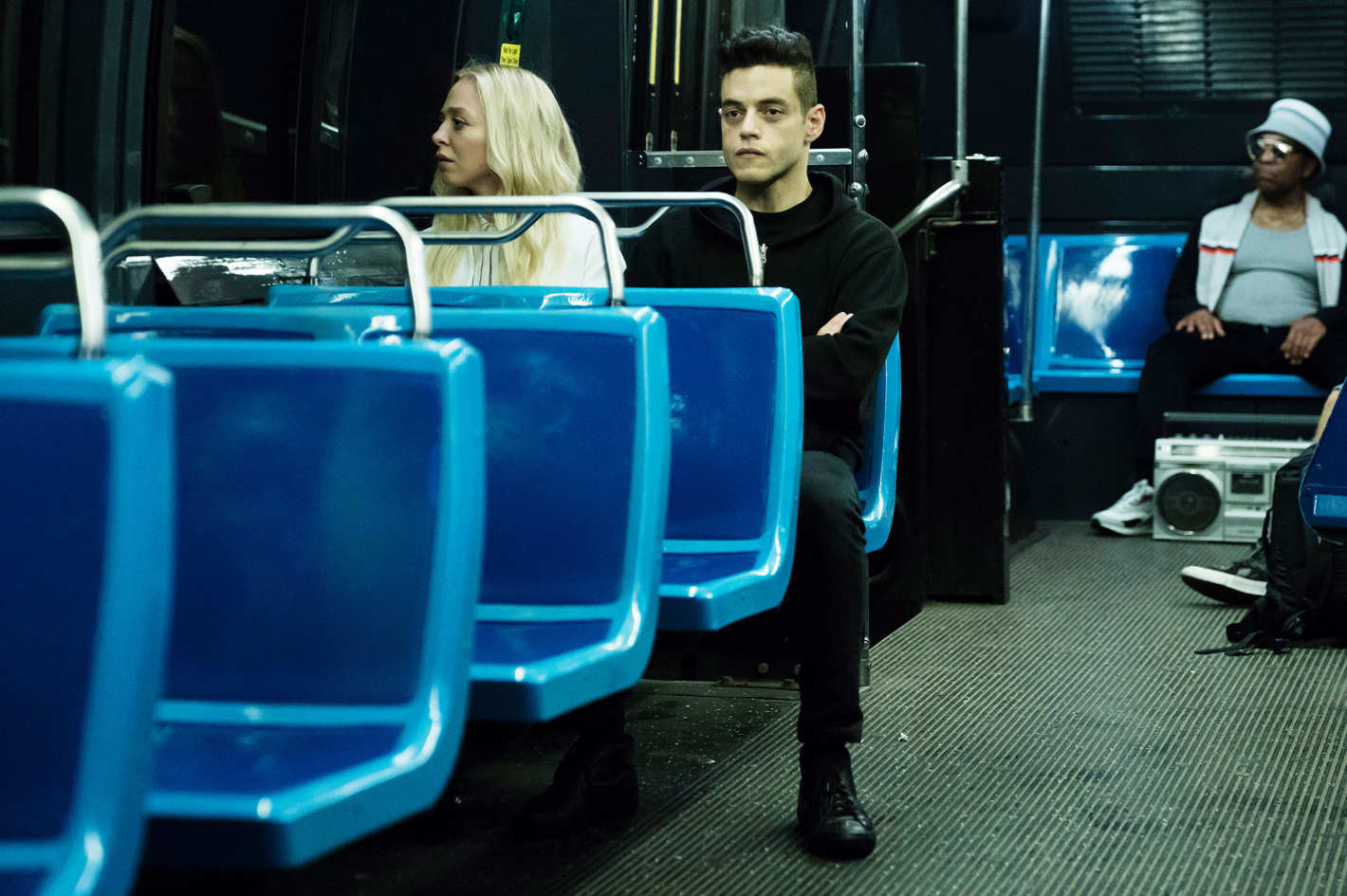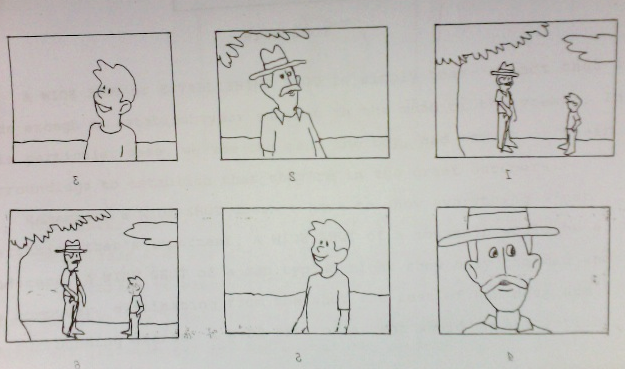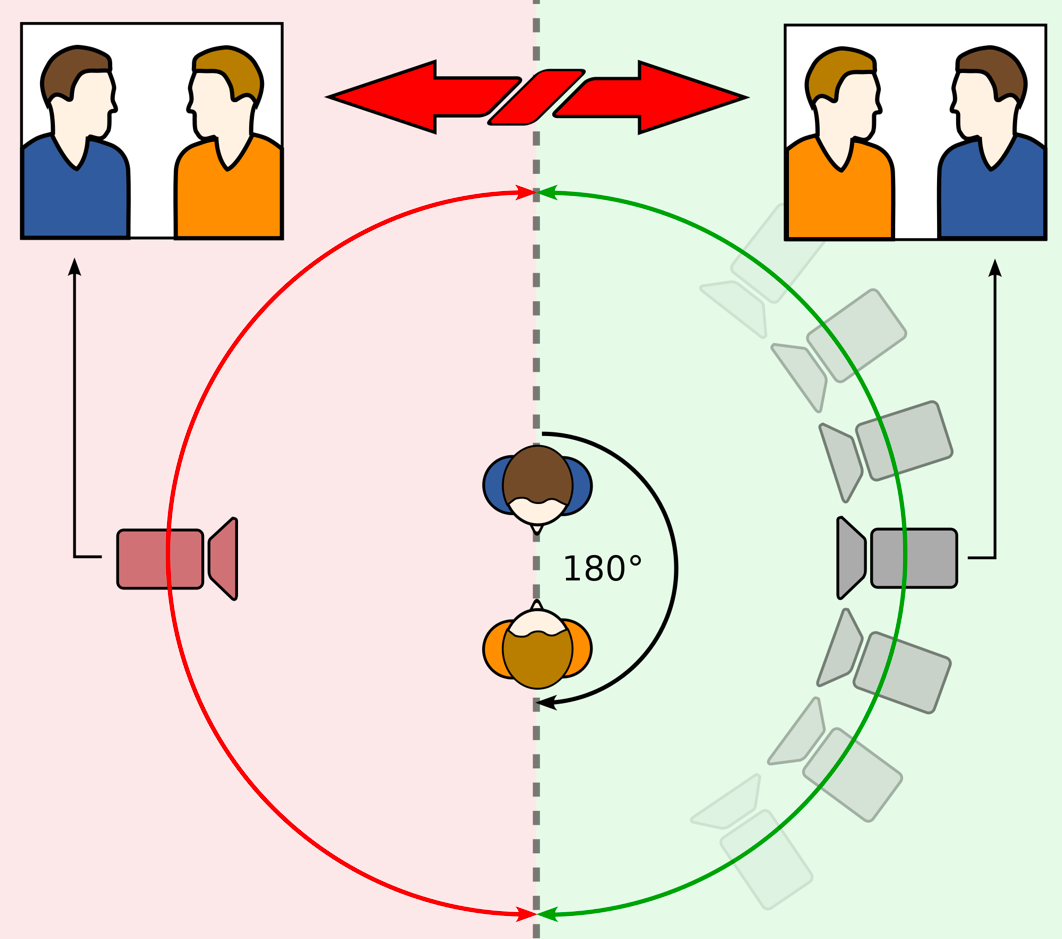Basic Sequence:
A basic sequence is a technique used in film-making to allow for each scene to be more interesting and it involves numerous clips of the same scene. It is achieved by splitting up a long scene with just one shot and angle to several shorter clips with varying shots and angles.
What are the typical series of shots you might see in a basic sequence?
In a basic sequence, the first type of shot you would come across is the establishing or wide shot. It conventionally is used at the beginning of a sequence because it establishes the critical aspects of the scene: the location and the characters involved. An establishing shot is usually either a long or medium shot allowing for the inclusion of contextual information.
Medium Close-up and close-up shots are part of the cutaways or coverage included in the scene along with the establishing shot. Their purpose is to show the characters speaking to each other. These shots include over-the-shoulder shots (OTS) or reverse shots.
What is a cutaway and why is it useful? A cut away is a shot that allows for an editor to easily change the length or order of a basic sequence. A cutaway can serve to enhance the story and provide a different visual that still relates to the main action.
What should your camera angle look like for a Basic Sequence, and why is variety important? In a basic sequence, your camera angles should be varied. This is important because it keeps the clips in the scene from becoming too boring or too similar to one another. Changing up the angles also makes it easier to cut back and forth between shots to create smooth transitions.
“The master shot can often be confused with an establishing shot as both shots establish the scene by identifying key signifiers such as; who is in them and where the location is. However, an establishing shot leans more towards establishing the geographical location of a scene. If the next scene, which is a conversation between two characters, takes place within the garage of a city building, the establishing shot may be of the city and then the exterior of the garage. However, over the last decade there has become a tendency to cut the establishing shot to maintain a steady pace of the scene.
The master shot is a shot that includes all of the actors in the scene and it runs the entire length of the action. It is usually the first shot to be covered and the master shot will then be interwoven with other shots such as mid shots or inserts. In a conventional scene between two people, there will likely bet 3 shots covered.
The Master.
Shot of subject A.
Shot of subject B
These shots also stay true to the 180-degree rule.
”
Master Shot
A master shot sets the subjects within the scene and also lets the viewer know where they are in relationship to one another. The reading says that shooting a scene in a single shot is boring, but it's not necessarily true in all genres especially neo-realism.
Over the Shoulder Shot
An over the shoulder shot or OTS is a shot of someone or something taken from the perspective or camera angle from the shoulder of another person.
Here is the reverse of the last OTS.
A reverse shot, doesn't always have to be OTS, but can be a cutaway like above.
Each new shot should if at all possible involve a change in image size and camera angle. Not only does this make movies more interesting, but also makes it easier to cut between shots.
While varying shot angles and distances, it is also vital to follow the 180 degree rule.
“The 180 degree rule is a cinematography guideline that states that two characters in a scene should maintain the same left/right relationship to one another.
When the camera passes over the invisible axis connecting the two subjects, it is called crossing the line and the shot becomes what is called a reverse angle.”
Things to remember about the 180 degree rule
The 180 degree rule is about viewer orientation. It starts with the establishing shot and works from there. If you create another establishing shot, then the orientations starts again from that direction.
You can cheat the 180 degree rule in the following ways:
1. You can show the camera crossing "the line"
2. You can use a visual reference (like the ramp going up to the boat in the book)
3. You can cut on an action (like the character in the book putting on his hat
4. You can use a cutaway between two different reverse angles, to neutralize the orientation.
the 45 degree rule helps to avoid jump cuts.
What is Jump Cut? A jump cut occurs when the image size of two separate clips is changed but the camera angle is not altered. This can lead to jerky, unnatural-looking movements.
At 1:37 you can see that jump cuts can be used to create the effect of the camera moving forward. Note: the shower sequence from Psycho isn't considered classical Hollywood editing, because the edits aren't invisible.
The 45 degree rule (or 30 degree rule) helps avoid jump cuts
"If you change not only the image size, but also the camera angle, you'll be home free. The combination of image change and angle will alter the viewer's perspective just enough to make a smooth transition.
Note: the barebones book calls it 45 degree rule though it is most commonly called the 30 degree rule
Things to remember about the 45 degree rule:
•It makes transitions from shot to shot smoother and easier to accomplish
•If there is a subtle change in an image it will not be noticed if both shots are different enough











